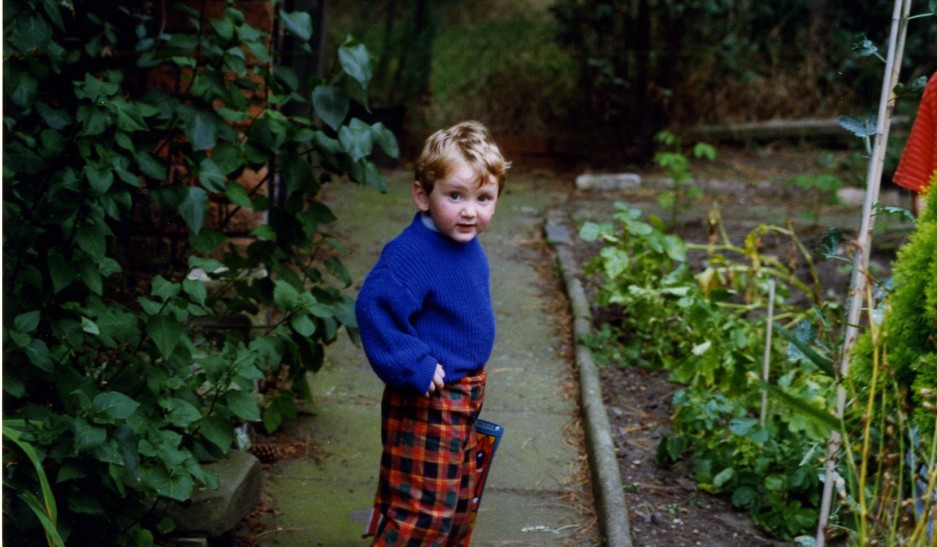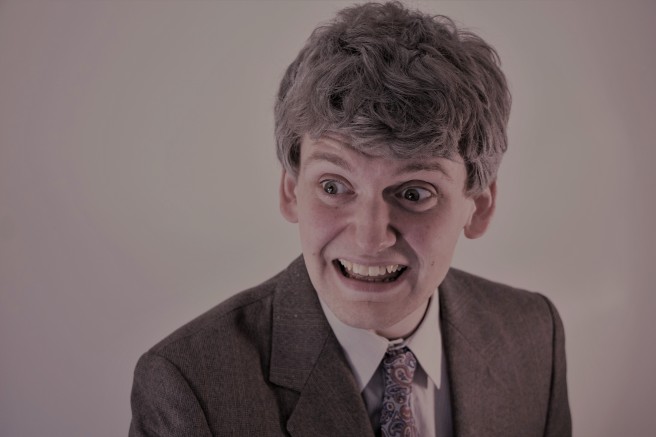When people ask me if I had any TV shows I watched in my childhood other than Doctor Who, I can actually list a great deal once I’ve stopped spitting in their face and shouting, ‘Obviously!’
I can mention Coronation Street, Who Wants to Be a Millionaire (‘Don’t reach for the cocking cheque, you moron! He’s obviously gonna say, “But we don’t wanna give you that!” for cock’s sake!’, my mother was known to shout, years before the show even began), Robot Wars, Jonathan Creek, Father Ted, Black Books (wet myself laughing during the first episode, if memory serves). If we look at children’s programmes specifically, I could also list Blue Peter, ChuckleVision, The Demon Headmaster, Aquila, Pig Heart Boy, Home Farm Twins, The Ghost Hunter, Bodger and Badger, G-Force, Mr Wymi.
Not all of those CBBC programmes are so well-remembered now, but another that is which I loved dearly was Get Your Own Back. Why didn’t I go to see the live version a few years ago? Almost as big a regret as never going on a tour of Television Centre before it was hollowed out and ruined.
There was little on telly that felt more exciting to me, especially in its 1996-and-beyond incarnation. The colours, the noise, the obstacle courses, the gunge. It was the anarchy that anyone with taste loves regardless of age, but which TV aimed at adults has yet to capture.
Kids gunging their parents was one thing, but one of my most vivid TV memories is the first time I watched the last in the series of that year (my diligent research has not yet revealed wether this was a Christmas special). I still remember my amazement when a girl who had brought her father (?) on said to Dave Benson Phillips, ‘I don’t wanna gunge him… I wanna gunge you!’ The tables had turned. The only bigger shock I ever got from CBBC was when Grange Hill very bloodily killed a girl off, and this put significantly less of a damper on my day.
I decided unusual gungees must have become a tradition of series finales when I caught the end of another episode (I have decided this was broadcast in 1998) and saw Mr Blobby being lowered into the pool of gunk, in a bid to finally kill the monster. His distorted screams combined with the kaleidoscopic visuals of the studio to create an experience more unsettling than any nightmare. I understand they buried the still-twitching body below TV Centre that night, and his malign spirit has been used to explain why so many things have gone wrong for the BBC since (often being blamed ahead of examples of clear wrong-doing).
Unfortunately, because I drifted away from the show (perhaps I believed it would never again top ‘I wanna gunge you!’), I didn’t see any of the other celebrity Gunk Dunks that must have happened each year, and until today had no idea which surprise victims were eventually gunged. The truth of the years I didn’t see has astounded me, and it seems I missed some astonishing TV moments, all sadly absent from YouTube and therefore impossible for you to fact-check. You’ll just have to take my word for it.
- 1997: The Spice Girls. At the height of their power, it was decreed these, let’s call them what they were, modern-day Suffragettes, needed taking down a peg or two. Exposed in their true form as one five-headed and twenty-limbed entity, they were hurled screaming into the slimy abyss and immediately lost all credibility. Sure enough, their movie at the end of 1997 turned out to be quite bad, and Geri split painfully away from the main body the following year.
- 1999: Jar-Jar Binks. One of the most expensive episodes of British children’s TV ever made, as the flailing CGI buffoon slapstuck his last. In a palaver beyond the BBC’s control, the episode’s child audience was driven out of the studio by hordes of fully-grown, uncharismatic men, who whined their approval at the defeat of the creature they claimed had destroyed their childhoods, although in retrospect it would have been more accurate to say he had proved a minor irritant in their misspent adulthoods.
- 2000: Chris Tarrant. Gunged for ITV’s crime of scheduling the first win of Who Wants to Be a Millionaire against the last ever One Foot in the Grave. ‘We do wanna give you that!’ bellowed the crowd. My mother squealed with delight.
- 2001: Effigy of Osama Bin Laden. A jubilant autumn special that tapped into the same spirit that had made that year’s bonfire night such a success. Now recognised as having played its own small part in the slow cultural radicalisation that has turned so many of today’s eligible voters into white supremacists. Repeated in late 2011 on BBC4.
- 2002: Gareth Gates. A Pop Idol special in which Will Young once again triumphed over the humiliated Gates boy. As in 2000, big ITV names were chosen for the dunking as part of an ongoing campaign of revenge for the Millionaire/One Foot
- 2003: Richard Hillman. Appearing in character as the Coronation Street serial killer, actor Brian Capron was a surprisingly good sport in this edition which foreshadowed his looming drowning on the soap. The BBC viewed this subtle spoiler as the final act of revenge on ITV, and now opted for new targets.
- 2004: Tony Blair. ‘We got him, everyone,’ said a sombre Benson Phillips to the camera in the last ever episode. ‘We got him.’ Still cited by Blair’s critics as more effective retribution than the Chilcot Report 12 years later. Seen by many as a counterpoint to the 2001 special, and attracted the same questions from commentators and BBC management as to whether this was the most appropriate way to address the issues at hand.











